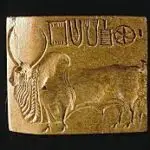India and the United Kingdom have concluded a landmark Free Trade Agreement (FTA), slashing tariffs across 90% of goods and marking a significant recalibration of bilateral economic relations in the post-Brexit and post-globalisation era.
India and the United Kingdom reached a Free Trade Agreement (FTA) on Tuesday, putting an end to approximately three years of negotiations. The agreement, signed by the fifth and sixth largest economies in the world, is particularly significant given the current global trade climate affected by the tariffs imposed by US President Donald Trump in early April.
According to an SBI Research report, the FTA is expected to enhance bilateral trade by £25.5 billion, contribute £4.8 billion to the UK’s GDP, and boost UK annual wages by £2.2 billion. For India, the deal brings expanded access to the UK market in labour-intensive sectors such as textiles, toys, marine products, auto components, and engineering goods. It also opens up opportunities in key service areas like IT, financial services, education, and professional services.
Total India–UK merchandise trade reached $21.3 billion in FY25, with India’s exports rising to $12.9 billion, while imports declined 6.1% to $8.4 billion, resulting in a trade surplus of over $4.5 billion.
A key element of the FTA is the facilitation of selective professional mobility—1,800 to 2,000 annual visas for Indian chefs, musicians, and yoga professionals. However, contentious issues such as broader immigration policy and short-term work visas for Indian students were left out of the agreement.
The FTA also includes provisions for digital trade facilitation, green goods, reciprocal social security contributions for temporary workers, and UK access to Indian government procurement as a class-2 supplier. Additionally, India has retained the right to revisit concessions if the UK’s proposed Carbon Border Adjustment Mechanism (CBAM)—slated for 2027—adversely impacts Indian exports.
The agreement, which both governments expect to formally sign in the coming months, underscores India’s evolving trade strategy. Negotiations with the EU, Australia, Peru, Sri Lanka, and Oman are also underway, alongside reviews of existing pacts with South Korea and ASEAN.
What changes with FTA
The India–UK FTA is seen not just as a transactional accord, but as a strategic realignment that navigates away from overdependence on Chinese supply chains and bypasses rising US protectionism—positioning both nations as collaborative players in a multipolar global economy.
According to a report by Reuters, tariffs on whisky and gin are set to be decreased significantly under a new trade deal. Initially starting at 150%, these tariffs will be cut in half to 75% before eventually dropping to 40% within the span of ten years. This move is expected to greatly benefit the Scotch whisky industry in Britain, as well as result in lower prices for consumers in the world’s largest whisky market.
Furthermore, the trade deal will likely lead to an expansion in choices for Indian consumers as a variety of goods will now be included. This expansion extends to clothing manufacturing businesses and jewellers who will now have access to the UK market, ultimately boosting their profit margins.
Additionally, India has committed to reducing automotive tariffs to 10% with certain quotas in place, marking a significant decrease from the current tariff rate of over 100%. Various other British goods such as cosmetics, aerospace products, lamb, medical devices, salmon, electrical machinery, soft drinks, chocolate, and biscuits will also benefit from lower tariffs under this trade agreement. Furthermore, Indian workers may see increased opportunities to work in certain sectors in the UK with the implementation of higher quotas.
The UK’s agreement with India ranks third in size, following its deals with Australia and Japan. The UK has signed trade agreements and agreements in principle with approximately 70 countries, as well as one with the EU.

